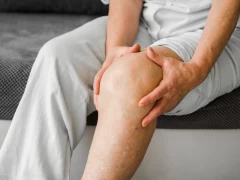
Exercises for Carpal Tunnel Syndrome: My Approach as a Physical Medicine and Rehabilitation Specialist
- Exercises for Carpal Tunnel Syndrome: My Approach as a Physical Medicine and Rehabilitation Specialist
- Mechanism of Carpal Tunnel Syndrome
- Initial Assessment and Planning
- Exercises for Carpal Tunnel Syndrome
- Osteopathic Intervention: Alternative Approaches in Carpal Tunnel Syndrome
- Conclusion and Monitoring Progress
Carpal tunnel syndrome (CTS) is a condition caused by the compression of the median nerve due to the narrowing of the carpal tunnel, located on the inside of the wrist. This condition is typically characterized by symptoms such as numbness, tingling, weakness, and pain in the hand and wrist. As a specialist, I frequently encounter patients with carpal tunnel syndrome and often achieve successful outcomes through physical medicine and rehabilitation programs. Before considering surgical intervention, exercise therapy is one of the first steps to alleviate symptoms and improve the condition. In this article, I will detail the exercises and treatment approach I implement for carpal tunnel syndrome.
Mechanism of Carpal Tunnel Syndrome
The carpal tunnel is a narrow passageway in the wrist through which the median nerve and eight small bones pass. When compression or increased pressure occurs within this tunnel, the median nerve becomes affected. Those at risk include office workers, individuals who frequently use computers, handcraft workers, those who regularly lift heavy equipment, and musicians. Repetitive hand movements can cause inflammation, swelling, and compression around the nerve.
In physical therapy, I employ exercises aimed at strengthening the wrist and hand muscles, increasing flexibility, reducing pressure on the nerve, and improving the nerve's movement. These exercises are often tailored to the individual’s needs and adjusted based on the severity of their symptoms.
Initial Assessment and Planning
Before starting exercises, I listen to the patient's complaints and conduct a clinical evaluation. During the physical examination, I assess the pressure on the median nerve and the range of motion in the wrist. If the pressure on the nerve is severe, I recommend using wrist support before beginning certain exercises. Once the wrist is stabilized, we can focus on healing the tissues surrounding the nerve.
The exercises I design generally focus on the following objectives:
- Reducing pressure on the median nerve,
- Strengthening the wrist and hand muscles,
- Enhancing nerve gliding to alleviate compression,
- Increasing flexibility to restore movement capability.

Exercises for Carpal Tunnel Syndrome
1. Nerve Gliding Exercises (Median Nerve Gliding)
These exercises help to improve the free movement of the median nerve and alleviate compression. Nerve gliding exercises also help relax the muscles, tendons, and connective tissues surrounding the nerve. I recommend my patients perform the following:
- Hold your hand flat and extend your arm forward.
- Bend your wrist back and stretch your fingers.
- Then, make a fist with your hand and stretch your fingers again.
- Repeat both movements slowly and in a controlled manner.
Performing this exercise several times a day with 5-10 repetitions at a time helps reduce symptoms.
2. Median Nerve Stretching Against the Wall (Stretching in Three Directions)
Stretching the median nerve is one of the most effective ways to relieve pressure in carpal tunnel syndrome. We perform this stretch using the wall in three directions (front, side, and back):
- Stand in front of the wall and press your palm flat against it.
- Keep your elbow straight and slowly move your body away from the wall. You will feel a stretch starting from the wrist and extending into the forearm.
- Similarly, move your hand to the side and back positions, then pull your body backward and hold each position for 15-30 seconds.
Repeating this exercise three times in each direction ensures the free movement of the median nerve and alleviates compression.
3. Wrist Stretching Exercises
These exercises help increase wrist muscle flexibility and reduce pressure in the carpal tunnel region, providing relief in daily life:
- Keep your arm straight and slowly bend your wrist down.
- Apply light pressure with your other hand to stretch the wrist, and hold this position for 15-30 seconds.
- Then, repeat the movement by stretching your wrist upward.
Applying this exercise to both wrists helps prevent muscle imbalances. I recommend doing several sets of this exercise daily.
4. Finger Stretching Exercises
Increasing finger flexibility and strength also plays an important role in treating carpal tunnel syndrome:
- Hold your fingers straight and spread them wide.
- Slowly make a fist and then open your hand again.
- Perform this exercise for 10-15 repetitions.
Additionally, using a rubber band to open and close your fingers adds resistance, further strengthening the muscles.
5. Wrist Strengthening Exercises
Muscle strength is crucial in treating carpal tunnel syndrome. The following exercise helps strengthen wrist muscles:
- Take a light weight (1-2 kg) and place your arm on the edge of a table, allowing your wrist to hang off the side.
- Slowly move your wrist up and down.
- Perform this movement for 10 repetitions on each wrist.
Over time, you can increase the weight to further strengthen your muscles.
6. Hand Squeezing Exercises
This exercise helps strengthen hand muscles. Using a stress ball or a towel, you can practice this exercise:
- Squeeze the stress ball or towel in your hand and hold the position for 5 seconds, then release.
- Perform 10 repetitions for each hand.
Osteopathic Intervention: Alternative Approaches in Carpal Tunnel Syndrome
In addition to physical medicine and rehabilitation, osteopathic interventions can be highly effective in treating carpal tunnel syndrome. Osteopathy involves manual therapy techniques applied to soft tissues, joints, and the musculoskeletal system, focusing on the body’s mechanical function.
In treating carpal tunnel syndrome, osteopathic approaches can include:
- Relaxing the connective tissues and muscles around the hand, wrist, and elbow using manual techniques,
- Mobilizing the structures within the tunnel through which the median nerve passes to reduce pressure on the nerve,
- Manipulation and mobilization techniques for the neck and shoulder region to alleviate pressure at the nerve’s origin points.
Osteopathic intervention is an important method, especially for relieving mechanical pressure on the nerve. By combining these manual therapy approaches with physical therapy exercises, I can effectively reduce nerve compression in my patients.
Conclusion and Monitoring Progress
Regular exercise is one of the most effective ways to reduce nerve compression and alleviate symptoms in carpal tunnel syndrome treatment. During the treatment process, I also recommend that my patients adjust their daily activities and set up ergonomic workspaces alongside the exercises.

Dr. Elif Berber
Physical Medicine and Rehabilitation Specialist





